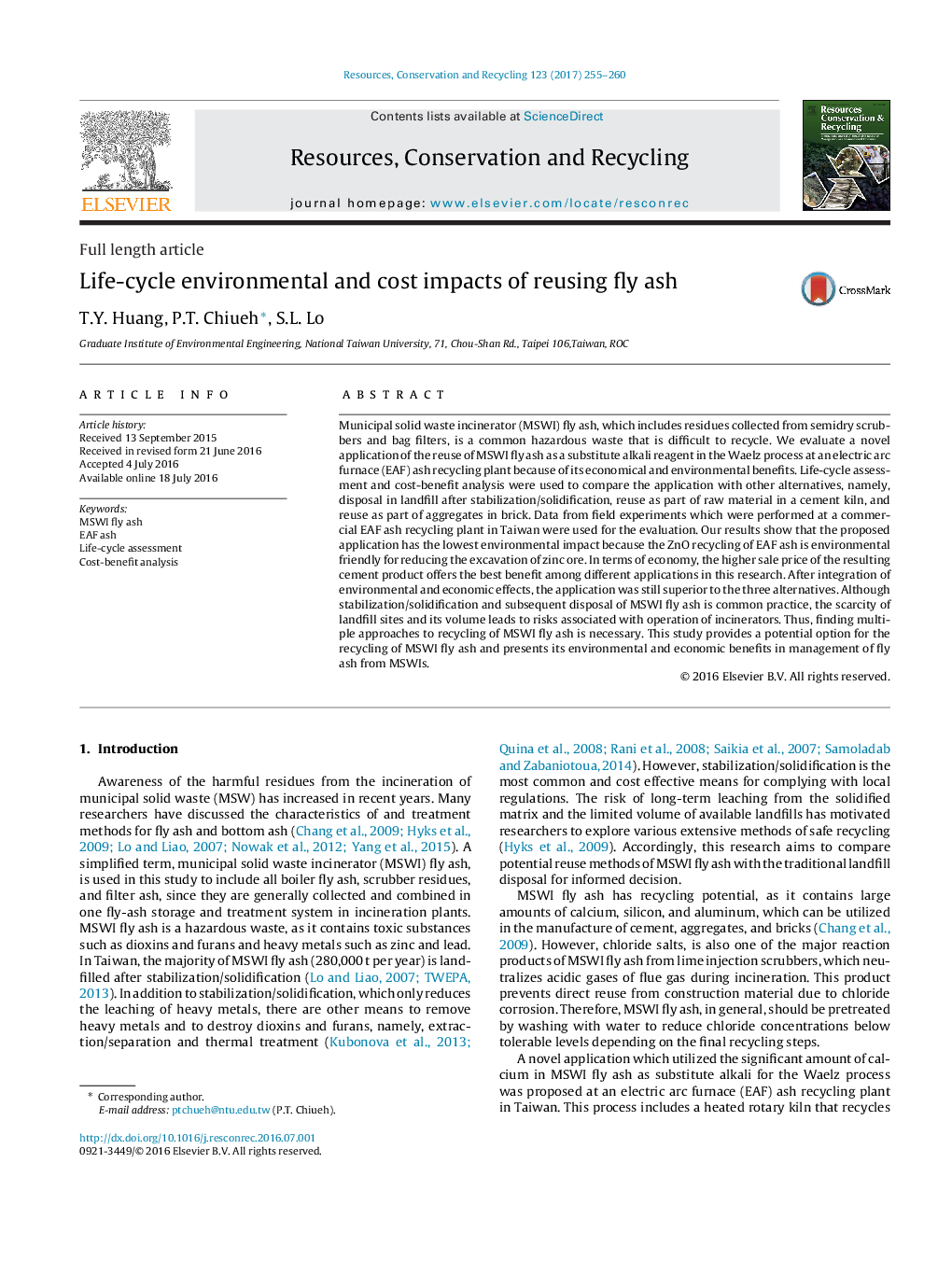| کد مقاله | کد نشریه | سال انتشار | مقاله انگلیسی | نسخه تمام متن |
|---|---|---|---|---|
| 5118839 | 1485669 | 2017 | 6 صفحه PDF | دانلود رایگان |
- Environmental impact and cost benefit analysis of fly ash reuse was evaluated.
- Best fly ash reuse method is reused as alkaline in Waelz process of EAF recycling.
- Fly ash reused as alkaline reduces emission for 30.6 kg eq CO2/tonne fly ash.
- Fly ash reused as cement causes highest emission for 563 kg eq CO2/tonne fly ash.
- Solidification/landfilled has the greatest environmental impact and highest cost.
Municipal solid waste incinerator (MSWI) fly ash, which includes residues collected from semidry scrubbers and bag filters, is a common hazardous waste that is difficult to recycle. We evaluate a novel application of the reuse of MSWI fly ash as a substitute alkali reagent in the Waelz process at an electric arc furnace (EAF) ash recycling plant because of its economical and environmental benefits. Life-cycle assessment and cost-benefit analysis were used to compare the application with other alternatives, namely, disposal in landfill after stabilization/solidification, reuse as part of raw material in a cement kiln, and reuse as part of aggregates in brick. Data from field experiments which were performed at a commercial EAF ash recycling plant in Taiwan were used for the evaluation. Our results show that the proposed application has the lowest environmental impact because the ZnO recycling of EAF ash is environmental friendly for reducing the excavation of zinc ore. In terms of economy, the higher sale price of the resulting cement product offers the best benefit among different applications in this research. After integration of environmental and economic effects, the application was still superior to the three alternatives. Although stabilization/solidification and subsequent disposal of MSWI fly ash is common practice, the scarcity of landfill sites and its volume leads to risks associated with operation of incinerators. Thus, finding multiple approaches to recycling of MSWI fly ash is necessary. This study provides a potential option for the recycling of MSWI fly ash and presents its environmental and economic benefits in management of fly ash from MSWIs.
Journal: Resources, Conservation and Recycling - Volume 123, August 2017, Pages 255-260
